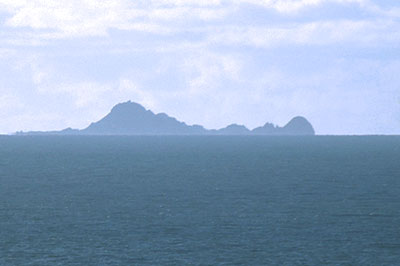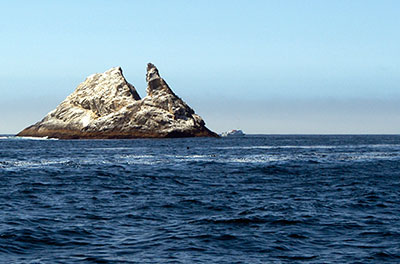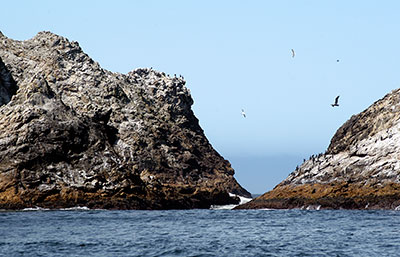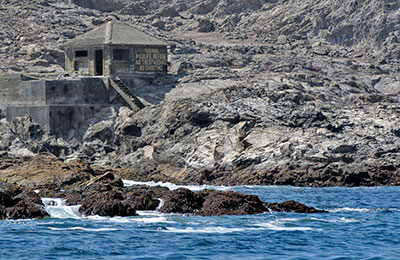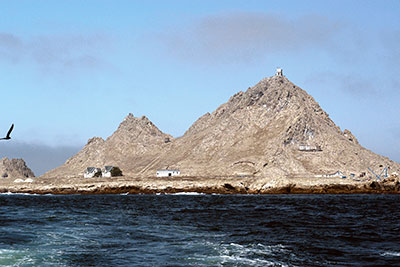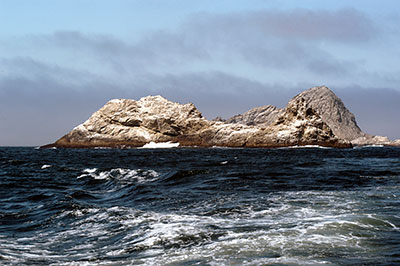National Register of Historic Places in San Francisco
Farallon Islands
27 Miles West of San Francisco
Pacific Ocean
Although the Farallones are located in the Pacific Ocean twenty-seven miles west the Golden Gate and twenty miles south of Point Reyes, they are part of the City and County of San Francisco. The Farallones contain the largest seabird colony in the continental United States and have been protected as the Farallon National Wildlife Refuge since 1909.
The archipelago consists of the South Farallon Islands, the Middle Farallon Island, and the North Farallon Islands.
Southeast Farallon Island (SEFI) is the largest island in the archipelago. With housing for scientists from the Point Reyes Bird Observatory and other researchers, SEFI is the only inhabited island. Other islands in the southern group are Seal Rock, Maintop Island, Drunk Uncle Islets, the Great West Arch and Smaller West Arch, Sugarloaf Island, Sea Lion Rock, and Hurst Shoal.
The privateer Sir Francis Drake landed on the islands in 1579 and was the first European to record them. They were charted by Sebastián Vizcaíno in 1603 and named Farallones. For the next 250 years, both Americans and Russians hunted seals on the islands, and from 1819 to 1838 the Russians maintained a sealing station on one of the islands.
After the Gold Rush of 1849, San Francisco took control of the Farallones and built the lighthouse. The bird colonies became a source of eggs for the rapidly growing city, yielding as many as 500,000 eggs a month. The 1863 Egg War between the lighthouse keepers and the egg companies cost two men their lives and ended private enterprise on the archipelago. In 1909, President Theodore Roosevelt created the Farallon Reservation by executive order. Although it is difficult to comprehend today, as recently as 1970 the Pacific Ocean surrounding the Farallones was used by the Atomic Energy Commission as the Farallon Island Nuclear Waste Dump.
Twelve species of seabird and shorebird nest on the islands: western gull, Brandt's cormorant, pelagic cormorant, double-crested cormorant, pigeon guillemot, common murre, Cassin's auklet, tufted puffin, black oystercatcher, rhinoceros auklet, ashy storm-petrel, and Leach's storm-petrel. Five species of seals visit the islands: northern elephant seal, harbor seal, Steller's sea lion, California sea lion, and the northern fur seal. Gray whales, blue whales, humpback whales, and great white sharks are found near the islands.
